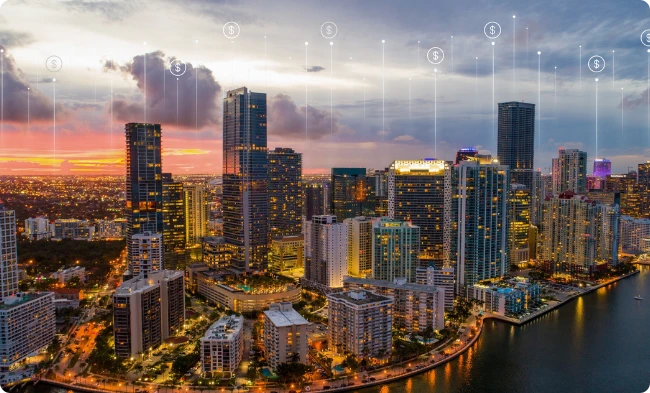Non-performing loans (NPLs) are more than just balance sheet issues – they represent stalled dreams, struggling small businesses, and families under financial strain. In emerging markets like Southeast Asia, Africa, and India, high NPL ratios have long been a drag on both economic growth and financial inclusion. According to the World Bank, average NPL ratios in many developing economies still hover between 6–10%, with rural and SME borrowers disproportionately affected.
Now, AI-powered collections are offering a way forward – helping banks not only recover dues faster but also engage with borrowers in ways that preserve dignity and trust.
India: Predictive Analytics Meets Rural Realities

In India, the rural lending segment has historically been vulnerable to defaults due to unpredictable incomes and weather-related risks. Yet, the impact of targeted AI interventions has been striking.
Punjab National Bank, for example, used predictive analytics to identify borrowers most at risk of delinquency and reached out early with customized repayment plans. This proactive approach helped reduce farm-loan NPAs to just 0.4%, according to RBI-reported data. Similarly, the Central Bank of India leveraged AI-driven monitoring to cut its Special Mention Account (SMA) ratio from 8% to 3% and boosted recovery rates by over 60% within a year.
Here, the technology wasn’t about cold automation – it was about spotting trouble early and acting with empathy, often by aligning repayment schedules with crop harvest cycles or seasonal income flows.
Africa: Using AI to Time Interventions Just Right

In South Africa, AI is helping banks address a long-standing challenge: knowing when to approach a borrower. University research in Johannesburg found that by forecasting a borrower’s monthly cash flow patterns, banks could time their recovery outreach to coincide with peak income periods.
When implemented in commercial portfolios, this strategy not only improved repayment rates but also reduced the cost of collections by up to 25%. The lesson here is clear – AI’s greatest strength is not just in identifying who is at risk, but in choosing the most humane and effective moment to make contact.
Southeast Asia: Digital-First, Data-Driven Turnarounds

In Southeast Asia, the adoption of AI-powered collections is still in its early stages, but results are promising. Across banks in Singapore, Indonesia, and Vietnam, predictive models are now being combined with behavioral segmentation to tailor communication channels – SMS for some borrowers, WhatsApp for others, and even interactive voice response (IVR) for older demographics.
McKinsey reports that digital-first collection outreach can reduce “contact bounce” rates by 25–30%, freeing up human agents to focus on complex or sensitive cases. Real-time dashboards allow managers to track repayment progress and field agent performance 24/7, making the process both more efficient and more borrower-friendly.
Why AI-Powered Collections Work?

- Early Risk Detection – Early risk detection isn’t just about technology, it’s about foresight. By reading subtle shifts in spending and repayment patterns, advanced algorithms can sense when a borrower might struggle long before the first payment is missed. This gives lenders the space to act early, offering solutions before small issues turn into full-blown crises.
- Humanized Communication – When it comes to communication, tone matters as much as timing. AI tools can adapt both, crafting messages that feel relevant and respectful to each borrower’s circumstances. The result is outreach that encourages action without sounding cold or confrontational – a balance that keeps relationships intact even in difficult situations.
- Omni-Channel Reach – Reaching customers is no longer a one-channel game. AI-powered systems can gently remind borrowers through WhatsApp messages, text alerts, or AI-assisted calls, choosing the platforms they actually use. That means no more letters gathering dust or unanswered voicemails, just well-placed nudges that get noticed.
- Live Monitoring – For the teams managing collections, visibility is everything. Live dashboards show exactly who has paid, who is engaging, and who needs a personal follow-up. Instead of chasing blind, collection teams can focus their energy where it makes the biggest difference.
- Built-In Compliance – And all of this operates within a framework of trust. Built-in compliance safeguards ensure every step aligns with local laws and ethical standards. That way, lenders can recover dues without risking their reputation, and borrowers know they are being treated fairly.
AI in Action: An Empathetic Flow
- A borrower misses an EMI, AI flags the account instantly.
- The system sends a polite, personalized WhatsApp message offering flexible payment options.
- If there’s no response, an AI-assisted voice call follows, timed to the borrower’s known availability.
- A relationship manager steps in only if needed, with full visibility into the borrower’s repayment history and communication log.
- The borrower resolves the payment before the account slips into full NPL status.
This approach reduces stress for the borrower and improves recovery rates for the bank – a true win-win.
The Bigger Picture
AI-driven collections are not about replacing human compassion, they’re about scaling it. In emerging economies, where lending is often a lifeline, this blend of machine precision and human empathy can turn collections from a purely transactional process into a relationship-strengthening opportunity.
For banks in India, Africa, and Southeast Asia, the question is no longer whether to adopt AI in collections but how quickly they can integrate it.
And for those looking for proven tools, FinnOne Neo’s AI-backed Collections module is built with emerging markets in mind delivering the precision, scalability, and ethical safeguards that modern debt recovery demands.






 Lending
Lending
 Transaction Banking
Transaction Banking Financial Inclusion
Financial Inclusion




























